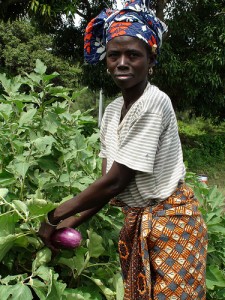Voluntary Guidelines for Realization of RtAF

To understand what the Right to Adequate Food means, refer to our previous article, Right to Adequate Food (RtAF).
All states that have signed the ICESCHR are duty-bound under international law to develop and implement effective and coherent policies in order to progressively achieve the full realization of the Right to Adequate Food. In November 2004, the Council of the Food and Agriculture Organization of the United Nations adopted Voluntary Guidelines to support the progressive realization of the Right to Adequate Food in the context of national food security. For the first time in history states came up with guidelines how to achieve the realization of food as a human right. Through a set of 19 guidelines governments are provided with a basic framework for action in order to fulfil the right to food. At the same time the Guidelines provide for a framework to monitor these policies and related state obligations.
Summary of the content of the Guidelines1
| Guideline 1 | Promote a free and democratic society, with good governance and a peaceful, stable, enabling social and political environment |
| Guideline 2 | Promote sustained availability of sufficient supplies of nutritionally adequate and safe food and sustainable economic development in support of food security |
| Guideline 3 | Adopt a national strategy for the right to food that includes addressing the needs of the poor, vulnerable and the disadvantaged |
| Guideline 4 | Improve agriculture and food markets and people’s access to those markets |
| Guideline 5 | Involve public institutions at all levels and establish coordinating mechanisms |
| Guideline 6 | Encourage the full participation of all members of society |
| Guideline 7 | Establish legal measures to support the right to food, including ways to correct violations, and inform the public of their rights |
| Guideline 8 | Respect and protect people’s access to natural resources and assets, including: land, water and genetic resources for food and agriculture Sustainability |
| Guideline 9 | Take measures to ensure that all food is safe; adopt and enforce food safety standards and protect and inform consumers |
| Guideline 10 | Support and improve dietary diversity and healthy eating and feeding habits, taking cultural values and traditions into consideration |
| Guideline 11 | Strengthen education and training opportunities, especially for girls and women |
| Guideline 12 | Dedicate national financial resources to anti-hunger and poverty programs |
| Guideline 13 | Establish measures to identify, assist and support malnourished, food insecure people |
| Guideline 14 | Establish measures, including food assistance, to protect and provide for those who are unable to provide for themselves |
| Guideline 15 | Ensure that emergency food aid is safe, nutritionally adequate, culturally acceptable and respects recognized humanitarian rights |
| Guideline 16 | Ensure that food and other basic supplies are provided to civilians in situations of armed conflict, occupation or natural disasters |
| Guideline 17 | Develop systems to monitor and evaluate progress, especially the food security and nutritional status of women, children and other vulnerable people |
| Guideline 18 | Incorporate the right to food concepts in national law and policy and encourage the establishment of national human rights organizations |
| Guideline 19 | Meet the goals, promises and commitments made by the international community to make sure that all people have enough to eat |
Download the full text of the Voluntary Guidelines.
References
- ↑ FAO. The Right to Food a window on the World, Resource and Activity Guide; FAO; 2006
